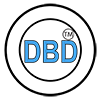The best time for making QSOs (contacts) on HF (High Frequency) bands can vary based on the specific band, geographical location, and current solar conditions. Here’s a general guideline to help maximize your chances of successful QSOs:
- 20 Meters (14 MHz): This is often considered the best all-around band for daytime operation, especially during the daytime. It can be open for long distances, even intercontinental, during daylight hours and remains active during the evenings, particularly during periods of high solar activity.
- 40 Meters (7 MHz): This band is versatile and can be used for both day and night QSOs. During the day, it is usually good for regional contacts, while at night, it can support longer distances as the D-layer of the ionosphere dissipates.
- 80 Meters (3.5 MHz): Primarily a nighttime band, 80 meters is excellent for long-distance contacts after sunset. It offers good regional coverage during the day but really shines after dark for DX (long-distance) opportunities.
- 17 Meters (18 MHz) and 15 Meters (21 MHz): These bands are often good for daytime operation and can be very effective for DX during periods of high solar activity. They might close down shortly after sunset.
- 10 Meters (28 MHz): This band is highly influenced by solar activity and is best during daylight hours, particularly when solar conditions are favorable. During solar maximum periods, it can support worldwide contacts and even open for sporadic E-skip during summer months.
- 160 Meters (1.8 MHz): Known as the “Top Band,” it is mostly a nighttime band, suitable for long-distance communication during the winter months when atmospheric noise is lower.
Remember, propagation conditions can change due to solar activity, so it’s beneficial to check online propagation forecasts and utilize tools like the DX cluster to see which bands are currently active. Additionally, experimenting with different times and bands will help you understand how propagation conditions affect your specific location.

